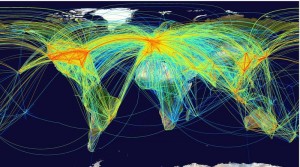Ancient Viruses
As climate change continues to bring up the global temperature, more consequences begin to surface. At the Arctic and the sub-Arctic regions, the ice is melting at a rate twice as fast as in other regions. Permafrost is not permanent anymore. Besides the obvious destruction of natural habitats, one other issue becomes apparent: the reawakening of prehistoric viruses. Just this week, French researchers discovered Mollivirus sibericum, the fourth type of prehistoric virus since 2003. Teams of scientists were able to safely contain these viruses and revive them in laboratory conditions, where they can study if the pathogens pose a serious threat to current human or animal organisms.
However, they also warn of a more ominous threat. If climate change continues to sporadically reawaken these ancient viruses without warning, we may not be able to be so quick to contain them. This means that the risk of new disease spread is a reality that is imminent. These ancient specimens are not only bigger than current circulating viruses, they are also more complex. For example, Mollivirus sibericum has more than 500 genes. In comparison, Influenza A has 8 genes. Therefore, we might not be able to protect ourselves fast enough before new diseases rage through the human or animal populace. If a new ancient virus that was able to infect humans were to enter the human population network, it would spread through the edges that link everyone together. Humans, as a result, act as nodes or vectors of disease transmission. The speed of transmission would be determined by where the virus enters in the web. Because the virus theoretically would start from the northern region of Earth, the initial rate of disease spread would be slow. This is because there are fewer links between nodes in the far northern reaches of the planet. However, as the disease makes its way down south towards areas where there are more concentrated numbers of nodes, the disease will be able to travel faster. This occurs because each node has more edges linking it to more nodes. Therefore, new diseases have the potential to wreck havoc on the human population because of how well our network is connected.
Here is an image that generalizes how a disease can spread through the human network:
http://america.aljazeera.com/articles/2015/9/8/frankenvirus-emerges-from-melting-siberia.html

